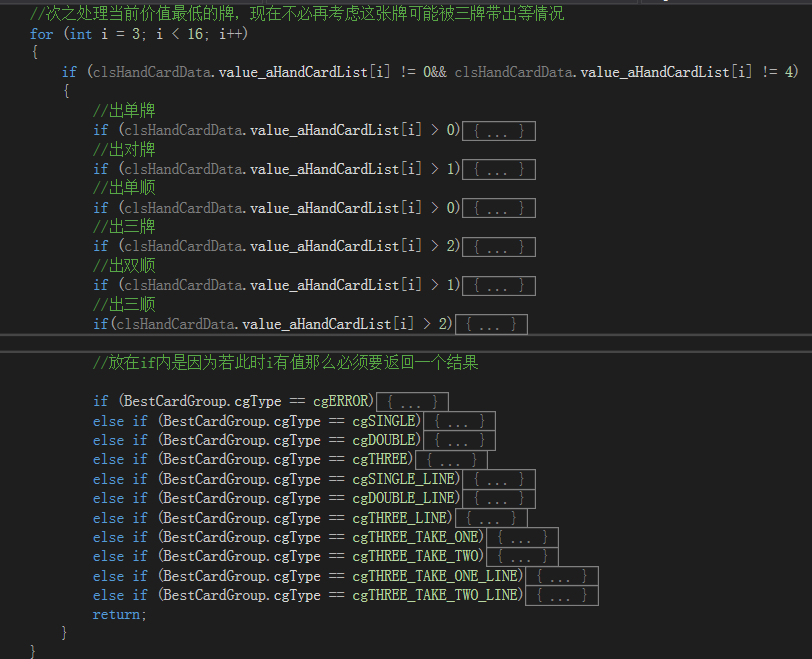标量某个具体数字
向量是多个标量
矩阵是多个向量
张量是多个矩阵(元素属同一数据类型的多维矩阵)
torch.tensor可以转换成张量
torch.Tensor可以指定张量形状或内容,不初始化值,除非用torch.rand()
#NumPy数组转换成张量
anp=np.asarray([1,2])
print(anp)
#输出:[1 2]a=torch.tensor(anp)或torch.from_numpy(anp)
print(a)
#输出:tensor([1, 2], dtype=torch.int32)#指定形状
b=torch.Tensor(2,3)
print(b)
#输出: tensor([[5.7283e+16, 8.7861e-43, 5.7283e+16],
# [8.7861e-43, 5.7296e+16, 8.7861e-43]])#指定内容
b=torch.Tensor([2,3])
print(b)
#输出: tensor([2., 3.])
torch.is_tensor()张量判断
torch.numel()张量元素个数
张量默认32位浮点型,或64位整形(有无小数点),打印不显示
用张量.dtype查看类型
用张量.type(torch.类型Tensor)转换类型,或张量.类型()。
张量.shape 张量.size() 张量形状
anp.shape anp.size numpy形状
条件类型切片
x=[[1,10],[2,10]]
x_tensor=torch.Tensor(x)
x_numpy=np.asarray(x)
print(x_numpy,x_tensor)
#输出:[[ 1 10]
# [ 2 10]]
# tensor([[ 1., 10.],
# [ 2., 10.]])print(x_tensor[x_tensor>5])
#输出:tensor([10., 10.])print(x_numpy[x_numpy>5])
#输出:[10 10]
NumPy数据转换成张量后不要进行
nparray+=1 要用 nparray=nparray+1 ,否则共用内存。
torch.randn()根据形状生成随机值
生成线性空间随机值
print(torch.arange(1,10,step=2))
print(torch.linspace(1,9,steps=5))
#输出:tensor([1, 3, 5, 7, 9]) int64
# tensor([1., 3., 5., 7., 9.]) float32
数据维度变换
x=torch.tensor([[1,2,3],[4,5,6],[7,8,9]])
print(torch.reshape(x,(1,-1)))
print(x.reshape([1,-1]))
print(torch.view(x,(1,-1)))
#输出: tensor([[1, 2, 3, 4, 5, 6, 7, 8, 9]])
将值为1的维度全部去掉,只去掉某个维度的加上dim=n
print(torch.tensor([[[[1,2,3]]]]))
print(torch.squeeze(torch.tensor([[[[1,2,3]]]],)))
#输出: tensor([[[[1, 2, 3]]]])
# tensor([1, 2, 3])
print(torch.squeeze(torch.tensor([[[[1,2,3]]]]),dim=2))
#输出: tensor([[[1, 2, 3]]])
torch.cat()实现数据连接,dim=0以行为单位连接
# x=torch.tensor([[1,2]
# ,[3,4]])
# y=torch.tensor([[5,6]
# ,[7,8]])
# print(torch.cat([x,y],dim=0))
#输出: tensor([[1, 2],
# [3, 4],
# [5, 6],
# [7, 8]])
# print(torch.cat([x,y],dim=1))
#输出:tensor([[1, 2, 5, 6],
# [3, 4, 7, 8]])
torch.chunk()按照指定维度拆分几部分
# a=torch.tensor([[1,2,3]
# ,[4,5,6]
# ,[7,8,9]])
# print(torch.chunk(a,chunks=3,dim=0))
#输出(tensor([[1, 2, 3]]), tensor([[4, 5, 6]]), tensor([[7, 8, 9]]))# print(torch.chunk(a,chunks=3,dim=1))
#输出(tensor([[1],
# [4],
# [7]]),
# tensor([[2],
# [5],
# [8]]),
# tensor([[3],
# [6],
# [9]]))
torch.gather()对张量数据进行检索
沿着维度0,按照index形状进行取值排列
x=torch.tensor([[1,2,3],[4,5,6],[7,8,9],[10,11,12]])
print(torch.gather(x,dim=0,index=torch.tensor([[0,1,3],[1,1,1],[2,2,2],[0,1,3]])))
#输出:tensor([[ 1, 5, 12],
# [ 4, 5, 6],
# [ 7, 8, 9],
# [ 1, 5, 12]])print(torch.gather(x,dim=1,index=torch.tensor([[0,1,2],[1,1,1],[2,2,2],[0,1,2]])))
#输出:tensor([[ 1, 2, 3],
# [ 5, 5, 5],
# [ 9, 9, 9],
# [10, 11, 12]]) torch.index_select()取出整列整行的数据
print(torch.index_select(x,dim=0,index=torch.tensor(2)))
#输出:tensor([[7, 8, 9]])
print(torch.index_select(x,dim=1,index=torch.tensor(2)))
#输出:tensor([[ 3],
# [ 6],
# [ 9],
# [12]])
按照指定阈值对张量进行过滤
x=torch.tensor([[1,2,3],[4,5,6],[7,8,9],[10,11,12]])
mask=x.ge(5) #大于等于5
print(mask)
print(torch.masked_select(x,mask))
#输出:tensor([[False, False, False],
# [False, True, True],
# [ True, True, True],
# [ True, True, True]])
#tensor([ 5, 6, 7, 8, 9, 10, 11, 12])
找出非0索引
eye=torch.eye(4)
print(eye)
print(torch.nonzero(eye))
#输出:tensor([[1., 0., 0., 0.],
# [0., 1., 0., 0.],
# [0., 0., 1., 0.],
# [0., 0., 0., 1.]])
#tensor([[0, 0],
# [1, 1],
# [2, 2],
# [3, 3]])
根据条件从多张量取值
b=torch.tensor([[5,6,7],[2,8,0]])
c=torch.ones_like(b)
print(c)
print(torch.where(b>5,b,c))
#tensor([[1, 1, 1],
# [1, 1, 1]])
#tensor([[1, 6, 7],
# [1, 8, 1]])
根据阈值进行数据截断
x=torch.tensor([[[1,2,3],[4,5,6],[7,8,9]]])
print(torch.clamp(x,min=3,max=7))
#输出:tensor([[[3, 3, 3],
# [4, 5, 6],
# [7, 7, 7]]])
获取数据中最大值和最小值及其索引
x=torch.tensor([[1,2,3],[4,5,6],[7,8,9]])
print(torch.max(x,dim=0))
#torch.return_types.max(
#values=tensor([7, 8, 9]),
#indices=tensor([2, 2, 2]))
print(torch.max(x,dim=1))
#torch.return_types.max(
#values=tensor([3, 6, 9]),
#indices=tensor([2, 2, 2]))
print(torch.min(x,dim=0))
#torch.return_types.min(
#values=tensor([1, 2, 3]),
#indices=tensor([0, 0, 0]))
print(torch.max(x,dim=1))
#torch.return_types.max(
#values=tensor([3, 6, 9]),
#indices=tensor([2, 2, 2]))
不太明白grad_fn(x)求的什么玩意,x**2与x*x求y.grad_fn(x)结果都不一致
from torch.autograd import Variable
x=Variable(torch.tensor([2.]),requires_grad=True)
y=x**2
z=y*3
print(y.grad_fn(x))
print(z.grad_fn(x))
#tensor([8.], grad_fn=<MulBackward0>)
#(tensor([6.], grad_fn=<MulBackward0>), None)from torch.autograd import Variable
x=Variable(torch.tensor([2.]),requires_grad=True)
y=x*x
z=y*3
print(y.grad_fn(x))
print(z.grad_fn(x))
#(tensor([4.], grad_fn=<MulBackward0>), tensor([4.], grad_fn=<MulBackward0>))
#(tensor([6.], grad_fn=<MulBackward0>), None)用backward()自动求导
from torch.autograd import Variable
x=Variable(torch.tensor([2.]),requires_grad=True)
y=x**2
z=y*3
z.backward()
print(x.grad) # 2x2x3=12
定义模型结构的步骤与方法
class LogicNet(nn.Module):def __init__(self,inputdim,hiddendim,outputdim):#初始化网络结构super(LogicNet,self).__init__()# self.Linear1 = nn.Linear(inputdim,hiddendim) #定义全连接层# self.Linear2 = nn.Linear(hiddendim,outputdim)#定义全连接层self.add_module("Linear1",nn.Linear(inputdim,hiddendim))#等价写法self.add_module("Linear2",nn.Linear(hiddendim,outputdim))self.criterion = nn.CrossEntropyLoss() #定义交叉熵函数
model=LogicNet(2,3,2)
print(model)#等价model.eval()
for name,module in model.named_children():print(name,module)
#LogicNet(
# (Linear1): Linear(in_features=2, out_features=3, bias=True)
# (Linear2): Linear(in_features=3, out_features=2, bias=True)
# (criterion): CrossEntropyLoss()
#)
#类似效果
#Linear1 Linear(in_features=2, out_features=3, bias=True)
#Linear2 Linear(in_features=3, out_features=2, bias=True)
#criterion CrossEntropyLoss()
从模型中获取参数,前两条是L1的,后两条是L2的。
param.size()获取形状
for name,param in model.named_parameters():print(name,param)#Linear1.weight
#Parameter containing:
#tensor([[-6.9422e-01, 4.7358e-01],
# [ 2.9420e-01, -5.8486e-01],
# [-4.8780e-01, 5.1695e-04]], requires_grad=True)
#Linear1.bias
#Parameter containing:
#tensor([-0.4755, 0.3347, 0.2030], requires_grad=True)#Linear2.weight
#Parameter containing:
#tensor([[-0.1614, -0.0926, -0.2895],
# [ 0.5527, -0.4828, -0.3293]], requires_grad=True)
#Linear2.bias
#Parameter containing:
#tensor([ 0.1613, -0.1190], requires_grad=True)
model.state_dict()获取模型Parameter和buffer参数,但不能获取Variable
params=model.state_dict()
print(params)
#OrderedDict([
#('Linear1.weight', tensor([[-0.1427, -0.4139],
# [ 0.6661, 0.2446],
# [-0.4138, 0.2357]])),
#('Linear1.bias', tensor([ 0.6566, -0.3813, -0.3115])),
#('Linear2.weight', tensor([[-0.4086, -0.4664, 0.4307],
# [ 0.1386, 0.5670, -0.1505]])),
#('Linear2.bias', tensor([0.3785, 0.1274]))])
print(params['Linear1.weight'])
#tensor([[-0.1427, -0.4139],
# [ 0.6661, 0.2446],
# [-0.4138, 0.2357]])
保存和载入模型参数
torch.save(model.state_dict(),'model.pth')
print(model.load_state_dict(torch.load('./model.pth')))





